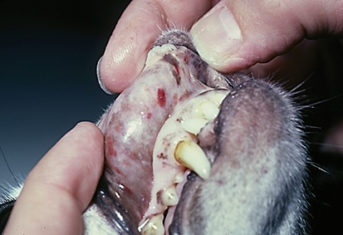Hemodialysis in Dogs: What You Need to Know

Hemodialysis in Dogs: What You Need to Know
World Kidney Day 2021 is March 11th, but kidney health is not just for humans. Keeping your pet’s kidneys healthy is an important part of keeping your pet healthy. Dialysis, also called hemodialysis, is a well-known treatment for humans with failing kidneys. Dialysis does not correct kidney damage but provides the blood-filtering function normally provided by the kidneys until the kidneys recover. Dialysis is not just a treatment for kidney failure. The dialysis procedure can be modified to remove toxic substances from the bloodstream or to remove the liquid component of blood also known as plasma as part of treatment for some diseases. AMC provides hemodialysis as part of our Internal Medicine Service.
Filtering Bad Drugs
Dialysis was developed to remove the waste products that build up in the bloodstream when your kidneys don’t work well. But kidney waste products are not the only substance dialysis can remove. Dialysis filters readily remove alcohol from the bloodstream because alcohol is a small chemical compound not bound to proteins in the body. AMC veterinarians successfully used dialysis to treat a comatose dog following alcohol ingestion.
Another small chemical compound readily filtered by dialysis is ethylene glycol, or car antifreeze. To successfully remove antifreeze, dialysis must be started within eight hours of antifreeze ingestion. Early removal of antifreeze by dialysis prevents acute kidney injury caused by antifreeze byproducts. If not treated early, dogs ingesting antifreeze may die or, if they survive, may require long term dialysis to manage kidney failure.
Another variation of hemodialysis is charcoal hemoperfusion. During this procedure, a special charcoal filter is placed in the dialysis machine. The charcoal filter can remove a toxic substance not removed by a regular hemodialysis filter. A young Labrador retriever suffering from delta-9-tetrahydrocannabinol (THC) induced seizures was saved by charcoal hemoperfusion, and AMC veterinarians implemented charcoal hemoperfusion to save a dog having seizures from eating an entire bottle of ibuprofen.
Filtering Bad Blood
In addition to the filters in the dialysis machine, it has an elaborate centrifuge. The centrifuge separates the blood into its component parts: red blood cells and a golden liquid called plasma. In diseases where plasma contains disease causing substances, the dialysis machine can remove the bad plasma and replace it with plasma from a blood donor dog. This procedure is called plasma exchange and can also be performed using a special membrane filter instead of the centrifuge. Plasma exchange has been used in diseases like immune mediated hemolytic anemia and immune mediated thrombocytopenia where the plasma contains abnormal proteins that cause disease.
Plasma exchange has been a life-saver for dogs ingesting a variety of non-steroidal anti-inflammatory drugs like ibuprofen and naproxen, which are human medications, and deracoxib, which is a dog drug.
Avoid the Need for Filtration
Many of the patients I describe above needed some form of dialysis because they ingested a medication not intended for them. While pets are resourceful and curious, the need for dialysis is avoidable in many patients. Here are my suggestions for minimizing risk of medication ingestion in your pets.

































